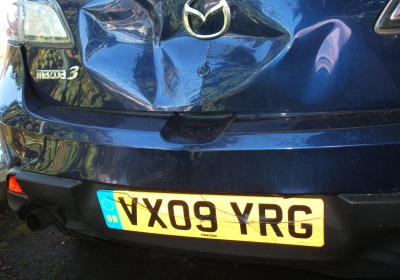Rear-end collisions increasing, says study
Mon, 02 Jun 2014REAR-END shunts on the road are getting more common despite the advance of new anti-crash technology, according to new research by accident management firm Accident Exchange.
Rear-end shunts – when one car drives into the back of another – have risen by 7% in the last three years as a proportion of all accidents. Each accident causes damage costing an average of £2,000 to repair.
The majority of rear-end collisions occur at low speeds in urban areas but, overall, constitute over a third of all accidents.
The figure has been rising steadily since 2011, despite the adoption of collision avoidance systems, powerful brakes and ABS systems over the last few years.
While not always standard equipment, Audi, Ford, Honda, Mazda, Skoda, Volvo and others provide systems on new cars which can take action – such as braking – autonomously.
Liz Fisher, Director of Sales Development at Accident Exchange, said: “There’s no obvious explanation because the nation’s roads are full of safer, more advanced vehicles which, in some cases, are supposed to help a driver to avoid collisions.
“However, it could be argued that increased connectivity in cars means the modern driver has more distractions while at the wheel from other technology, like mobile phones or MP3 players.”
Under section 126 of the Highway Code, typically if a driver hits another vehicle in the rear, they will be at fault for the incident. However, there are exceptions to the rule; for example, if the driver in front changes lanes and immediately brakes, or slows down suddenly for no reason.
By Press Association reporter

